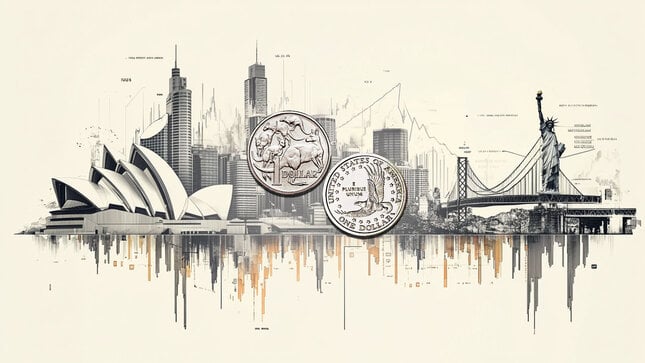- Gold discovers buying interest as Israel-Hamas tensions underpin risk-off impulse.
- US employment growth remained surprisingly upbeat in September.
- Strong US NFP data increase the chances of one more interest rate increase from the Fed.
Gold price (XAU/USD) recovers swiftly to around $1,850 as dismal market sentiment propelled by escalating tensions between Israel and Hamas improves the appeal for safe-haven assets. The yellow metal rebounds as the support from deepening geopolitical tensions offset the hit from a surprisingly strong Nonfarm Payrolls (NFP) report for September.
The commentary from Dallas Federal Reserve (Fed) Bank President Lorie Logan has also supported the Gold price. Fed Logan draws less emphasis on raising interest rates further If long-term interest rates remain elevated because of higher-term premiums. About the inflation outlook, Fed Logan cited "Progress on inflation is encouraging but it's too early to be confident it is headed to the Fed's 2% target in a sustainable, timely way."
Strong United States employment growth has prompted bets for one more interest rate increase from the Federal Reserve (Fed) as progress in taming inflation could slow down ahead. Fed Governor Michelle Bowman said over the weekend that she supports further policy-tightening by the central bank to bring down inflation to 2% in a timely manner. Going forward, the US Consumer Price Index (CPI) data will be keenly watched by the market participants.
Daily Digest Market Movers: Gold price recovers further as US Dollar faces pressure
- Gold price recovers swiftly after a breakout of the consolidation channel formed in the range of $1,810-1,830 as heightened Middle East clashes improve the appeal for safe-haven assets.
- The IMF said it is too early to assess the economic impact of the conflict in Israel and the Gaza Strip.
- The precious metal finds buyers’ interest even as US job growth remained surprisingly robust in September.
- As per the US NFP report, US employers hired 336K new job-seekers in September, significantly higher than expectations of 170K and the former release of 227K. The Unemployment rate remained steady at 3.8%, while investors anticipated a decline to 3.7%.
- On the earnings data front, monthly wages grew at a slower rate of 0.2%. The annualized wage rate decelerated to 4.2% against the estimates and the former release of 4.3%.
- A surprisingly upbeat US NFP report has accelerated hawkish Federal Reserve bets. According to the CME Group Fedwatch tool, traders see a 22% chance of the Fed raising interest rates by 25 basis points (bps) to the 5.50%-5.75% range at the next policy meeting. These changes were almost negligible before the official labor market data release. The probability of one more interest rate increase in any of the two remaining monetary policy meetings this 2023 has also risen, to 31%.
- The job data for September has confirmed that the US labor demand is resilient, making inflationary pressures above the 2% desired rate a hard nut to crack for Fed policymakers.
- Fed Governor Michelle Bowman reiterated this weekend in her remarks at the Connecticut Bankers Association that further policy tightening is appropriate. Bowman said she is willing to support one more interest rate hike at a future policy meeting if incoming data conveys that progress in inflation easing towards 2% has stalled.
- Bowman further added that interest rates should remain high after one more hike to achieve the 2% inflation goal in a timely manner.
- Going forward, the upcoming consumer inflation data is expected to play a pivotal role in the Fed’s monetary policy for November. The monthly core Consumer Price Index (CPI), which excludes volatile food and Oil prices, is expected to grow at a steady pace of 0.3% in September.
- On the US-global relations front, the US Commerce Department added 42 Chinese companies to the government’s export control list for providing support to Moscow’s military and defense industrial base, as reported by Reuters.
- To stabilize US-China relations, US President Joe Biden and China’s leader Xi Jinping are planning to meet soon in California, according to several media reports.
- The US Dollar Index (DXY) rebounds sharply after correcting to near 106.00 as investors rush to safe-haven assets due to the dismal market mood prompted by the war between Israel and Hamas, which could suck in other Middle East players.
- In addition to the risk-off impulse, the hawkish interest rate outlook by Fed policymakers has propelled demand for the US Dollar and Treasuries.
- The US markets will remain closed on Monday on account of the Columbus Day holiday.
Technical Analysis: Gold price sees more gains above $1,850
Gold price capitalizes on the Israel-Hamas conflict as the appeal for safe-haven investments improves. The precious metal recovers after a consolidation breakout and is expected to extend recovery to near the 20-day Exponential Moving Average (EMA), which trades around $1,870.00. The broader outlook for Gold price is bearish as the 50-day and 200-day Exponential Moving Averages (EMAs) have delivered a death cross. Momentum oscillators recover after turning to extremely oversold levels.
Fed FAQs
What does the Federal Reserve do, how does it impact the US Dollar?
Monetary policy in the US is shaped by the Federal Reserve (Fed). The Fed has two mandates: to achieve price stability and foster full employment. Its primary tool to achieve these goals is by adjusting interest rates.
When prices are rising too quickly and inflation is above the Fed’s 2% target, it raises interest rates, increasing borrowing costs throughout the economy. This results in a stronger US Dollar (USD) as it makes the US a more attractive place for international investors to park their money.
When inflation falls below 2% or the Unemployment Rate is too high, the Fed may lower interest rates to encourage borrowing, which weighs on the Greenback.
How often does the Fed hold monetary policy meetings?
The Federal Reserve (Fed) holds eight policy meetings a year, where the Federal Open Market Committee (FOMC) assesses economic conditions and makes monetary policy decisions.
The FOMC is attended by twelve Fed officials – the seven members of the Board of Governors, the president of the Federal Reserve Bank of New York, and four of the remaining eleven regional Reserve Bank presidents, who serve one-year terms on a rotating basis.
What is Quantitative Easing (QE) and how does it impact USD?
In extreme situations, the Federal Reserve may resort to a policy named Quantitative Easing (QE). QE is the process by which the Fed substantially increases the flow of credit in a stuck financial system.
It is a non-standard policy measure used during crises or when inflation is extremely low. It was the Fed’s weapon of choice during the Great Financial Crisis in 2008. It involves the Fed printing more Dollars and using them to buy high grade bonds from financial institutions. QE usually weakens the US Dollar.
What is Quantitative Tightening (QT) and how does it impact the US Dollar?
Quantitative tightening (QT) is the reverse process of QE, whereby the Federal Reserve stops buying bonds from financial institutions and does not reinvest the principal from the bonds it holds maturing, to purchase new bonds. It is usually positive for the value of the US Dollar.
Information on these pages contains forward-looking statements that involve risks and uncertainties. Markets and instruments profiled on this page are for informational purposes only and should not in any way come across as a recommendation to buy or sell in these assets. You should do your own thorough research before making any investment decisions. FXStreet does not in any way guarantee that this information is free from mistakes, errors, or material misstatements. It also does not guarantee that this information is of a timely nature. Investing in Open Markets involves a great deal of risk, including the loss of all or a portion of your investment, as well as emotional distress. All risks, losses and costs associated with investing, including total loss of principal, are your responsibility. The views and opinions expressed in this article are those of the authors and do not necessarily reflect the official policy or position of FXStreet nor its advertisers. The author will not be held responsible for information that is found at the end of links posted on this page.
If not otherwise explicitly mentioned in the body of the article, at the time of writing, the author has no position in any stock mentioned in this article and no business relationship with any company mentioned. The author has not received compensation for writing this article, other than from FXStreet.
FXStreet and the author do not provide personalized recommendations. The author makes no representations as to the accuracy, completeness, or suitability of this information. FXStreet and the author will not be liable for any errors, omissions or any losses, injuries or damages arising from this information and its display or use. Errors and omissions excepted.
The author and FXStreet are not registered investment advisors and nothing in this article is intended to be investment advice.
Recommended content
Editors’ Picks

AUD/USD climbs above 0.6200 amid broad USD weakness and trade jitters
The Australian Dollar extended its advance on Thursday, climbing toward the 0.6240 zone. The pair built on recent strength as the US Dollar Index slid further toward multi-month lows near the 101 area. This move came after markets digested the White House’s confirmation of a steep 145% tariff on Chinese goods, combined with a cautious Federal Reserve tone.

EUR/USD surges higher as tariff walk-back eases tensions further
EUR/USD roared into its highest bids in nearly two years on Thursday, breaching and closing above the 1.1200 handle for the first time in 21 months. Market tensions continue to ease following the Trump administration’s last-minute pivot away from its own tariffs, sparking a softening in US Dollar flows.

Gold rises to record high near $3,200 on US-China tariff war
Gold price surges to near an all-time high around $3,190 during the early Asian session on Friday. The weakening of the US Dollar and escalating trade war between the United States and China provide some support to the precious metal.

Bitcoin miners scurry to import mining equipment following Trump's China tariffs
Bitcoin miners are reportedly scrambling to import mining equipment into the United States following rising tariff tensions in the US-China trade war, according to a Blockspace report on Wednesday.

Trump’s tariff pause sparks rally – What comes next?
Markets staged a dramatic reversal Wednesday, led by a 12% surge in the Nasdaq and strong gains across major indices, following President Trump’s unexpected decision to pause tariff escalation for non-retaliating trade partners.

The Best brokers to trade EUR/USD
SPONSORED Discover the top brokers for trading EUR/USD in 2025. Our list features brokers with competitive spreads, fast execution, and powerful platforms. Whether you're a beginner or an expert, find the right partner to navigate the dynamic Forex market.



